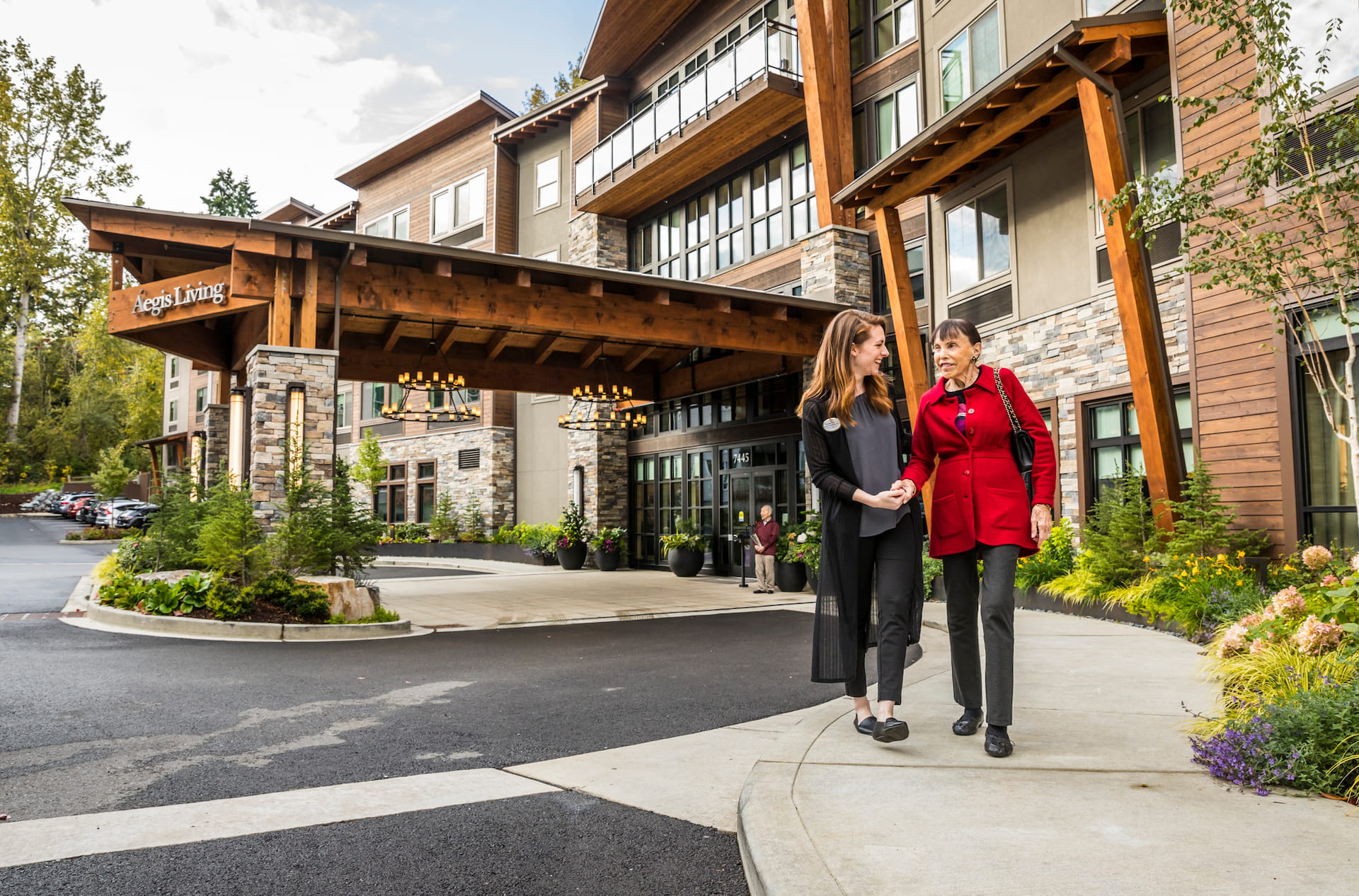
What’s Included in the Cost of a Senior Living Community?
Every assisted living and memory care community is different, so their offerings will vary, and you need to clarify what is included in your base cost, what is available for an additional cost, and what is not offered. For example, how are ADL charges determined, and are salon services additional? Here are some of those services and amenities to ask for details about:
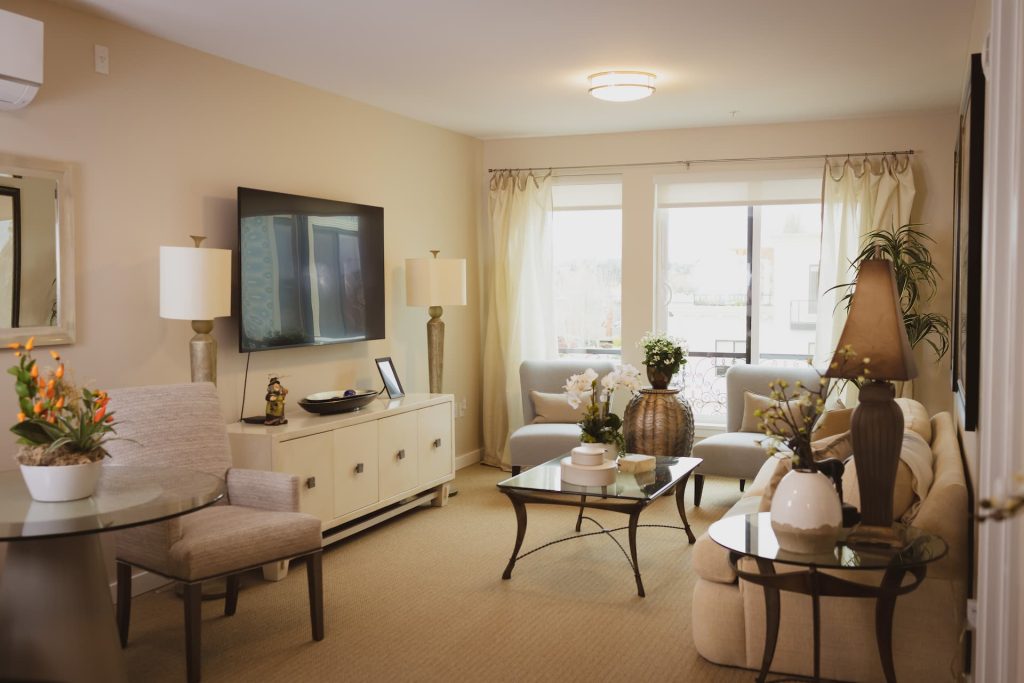
Apartment
Assisted living residents typically live in a semi-private or private apartment. Depending on the community, these can be furnished or unfurnished, and most often include a bedroom, small kitchen, sitting area, and private bathroom. The types of apartments vary in size, such as a private studio, one-bedroom, two-bedroom, or shared apartments.
Activities of Daily Living (ADLs)
With age, some personal tasks can become difficult due to frailty, muscle weakness, or less flexibility. Caregivers are available around-the-clock to assist their residents with basic needs like grooming, toileting, dressing, and feeding. Also, it is common for residents to need assistance with walking or transferring. For example, they may need help moving from a bed to a wheelchair or from a chair to a standing position.
Planned Activities
One of the most significant benefits for a senior in an assisted living community is staying social. Often friendships are formed during recreational activities, craft classes, outings, parties, and group events. Most communities offer a calendar filled with daily events and activities to keep their residents active and engaged.
Health Services and Medication Management
Nurses, full-time caregivers, and medication managers help monitor and support the care needs of your loved one in an assisted living community. The staff will make an initial assessment to determine the services your loved one will need to create a care plan and reevaluate those needs regularly. They will make modifications to your loved one’s care plan to reflect services no longer needed or add more required support. In determining and monitoring staffing levels, Aegis Living considers resident assessments and other factors.
Dining
Typically, three meals per day are included with snacks and beverages throughout the day. Meals and dining with friends are the parts of the day that residents look forward to most. These are valuable social opportunities. When you are touring a community, stay for a meal.
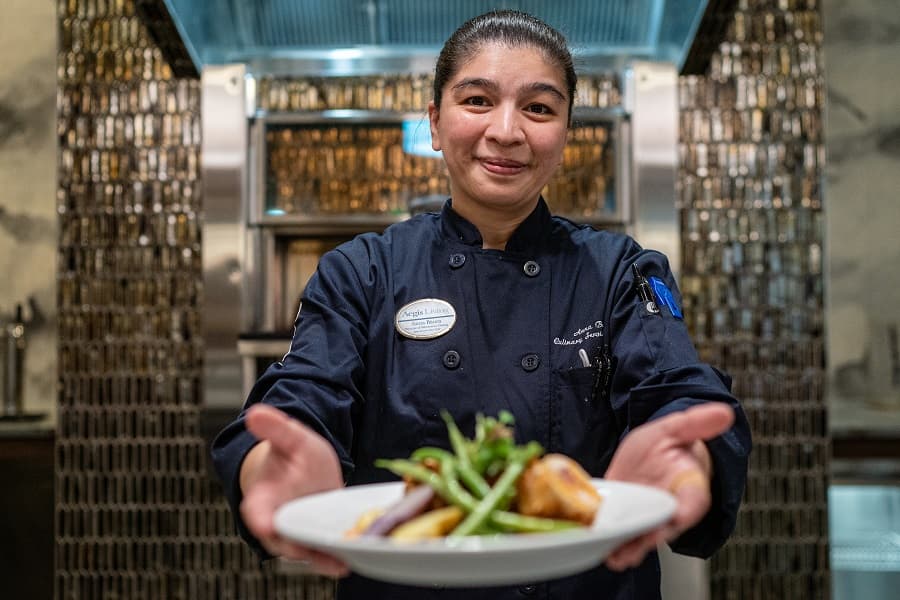
Emergency Call Systems and Motion Sensors
Every assisted living community wants your loved one to remain healthy in their care. An emergency call system means that your loved one will get immediate help in case of an emergency. Motion sensors in the room help to track movement if a resident is up during the night. When touring, ask about a community’s safety precautions and emergency systems.
Exercise
Many communities offer wellness centers with exercise equipment to keep residents active. Some may offer a pool, tennis courts, walking tracks, or other outdoor recreation. As part of their wellness program, communities may offer walking groups or modified exercise classes that specifically cater to older adults.
Entertainment
Assisted living communities are set up to offer an array of amenities and activities to keep seniors engaged and entertained. These can vary greatly. Look for amenities that interest your parent like a movie theater, game room, craft room, library, or sports den!
Housekeeping, Laundry Service, and Home Maintenance
Often seniors move into assisted living because managing the care of a house becomes overwhelming for them. The benefit of assisted living is their needs are taken care of with regularly scheduled housekeeping, laundry service, and any maintenance they would need in their apartment.
Transportation
Most senior living communities have town cars, vans, or small buses for outings as a group or to be used for medical appointments or scheduled individual needs.
Beauty Salon and Barbershop
Everyone wants to look their best—no matter their age! Senior living communities often include an onsite salon for haircuts, styling, nail care, and more. Residents can get their personal care needs met in the comfort of their community.
24-Hour Security
Keeping residents safe is a priority of any community. Your parent will benefit from staff who are available 24/7 and aware if residents are leaving the building or individuals are entering the community. At our Aegis Living communities, we use check-in kiosks at the concierge desks to track our visitors within the community as an added safety measure.
What’s the Average Cost for an Assisted Living Community?
The average monthly cost for an assisted living community is $4,500 per month in California and $5,500 per month in Washington, according to the Genworth Financials Cost of Care annual report. But if your parent needs around-the-clock care, an assisted living or memory care community will cost much less than a comparable 24-hour, live-in home health aide.
Most Expensive Assisted Living by State
Across the United States, over 800,000 Americans live in an assisted living community. According to Genworth Financials, these are the five most expensive states for the median annual cost of a private, single-unit apartment:
| State | Daily Cost | Monthly Cost | Yearly Cost |
| Alaska | $197 | $6,000 | $72,000 |
| Delaware | $198 | $6,035 | $72,414 |
| New Jersey | $210 | $6,400 | $76,800 |
| New Hampshire | $231 | $7,021 | $84,225 |
The Least Expensive for Assisted Living
In contrast, an assisted living private, single-unit apartment in Missouri will cost you close to $40,000 less than Alaska and around $18,000 less than the national median. But for many, moving away from the place they call home is not realistic.
| State | Daily Cost | Monthy Cost | Yearly Cost |
| Missouri | $95 | $2,881 | $34,566 |
| Arkansas | $104 | $3,175 | $38,100 |
| Alabama | $107 | $3,250 | $39,000 |
| Georgia | $110 | $3,335 | $40,020 |
What is the Cost of Other Long-Term Care Options?
Homemaker Services
Average monthly cost: $4,290
For a senior who needs a helping hand around the house, homemaker services include cooking, cleaning, and running errands. They will come into a senior’s home and provide assistance to make life more comfortable. But services do not include personal care. If an individual’s ability declines over time, costs may increase with added services.
Home Health Aides
Average monthly cost: $4,385
Home health aides offer personal care that includes the ADLs, such as bathing, dressing, meal preparation, and household tasks that your loved one can no longer manage. They can also provide transportation assistance and companionship for isolated seniors within their home. Increasing care needs will increase costs.
Adult Day Health Care
Average monthly cost: $1,625
Adult day health care centers are community-based programs that provide health services in a protective setting. For older adults struggling with isolation and loneliness, they offer socialization and structured activities. They may also supervise the individual’s care and health needs. Adult Day Health Care is not a live-in situation. Seniors visit for several hours each day and then return home.
Skilled Nursing (Nursing Home)
Average monthly cost: $7,513 for a semi-private room or $8,517 for a private room
Nursing homes provide a higher level of supervision around-the-clock, with care provided from registered nurses and licensed practical or vocational nurses. In addition to ADLs and housekeeping tasks, the staff can provide a higher level of medical care, including pain management, dialysis, intravenous drug therapy, and rehabilitation. Nursing homes offer two types of rooms: semi-private and private rooms.
The Value of Assisted Living
While it is important to understand and plan for the costs of assisted living, the intangible benefits that come with communal living can be priceless for the health and happiness of your parent.
- Social Interaction: Your parent or loved one will be surrounded by peers, neighbors, staff, and new friends. All day long, they will share activities, meals, and new experiences with others. Seniors benefit emotionally, mentally, and physically from these connections.
- Around-the-Clock Care Staff: Your parent’s health will be monitored by caring staff who interact with your loved one throughout the day. They will look for changes in their physical and mental health and quickly flag any issues that need to be addressed.
- Independence: Your parent can live as independently as possible when their primary care needs are met. An assisted living community can help boost their self-confidence, so they can feel like themselves again.
- Consistency of Care: If your parent’s needs change while living in an assisted living community, they will receive increased levels of care. They can continue to live in their new home with as little disruption as possible, surrounded by the familiar faces, friends, and caregivers whom they have come to know and depend on.
- Peace of Mind: Your family can relax knowing your parent is well cared for when you are not there—no middle of the night phone calls from your parent or worry they are not taking their medication on time.
- For Your Relationship: Best of all, you will be able to work on your relationship again as parent/child with less focus as their primary caregiver.
If you have questions about the costs of assisted living or memory care, contact your nearest Aegis Living community.

Next up
How To Choose A Community
When your family begins their search for assisted living, you are not only seeking a place to live but needed services and assistance for your loved one now and into the future. It’s important to strike a balance between finding a place where your parent or loved one feels at home and comfortable with meeting their care needs and within budget. The top of your list as you research assisted living options is excellent staff, quality care, and comfortable accommodations. But don’t overlook the small touches during your tours that can make a difference for your parent or loved one. Let us help you step-by-step as your family starts the journey of exploring senior care.
Ready to Find Your Perfect Community?
See what Aegis Living has to offer near you! If you’re feeling overwhelmed, just give us a call and we’ll be happy to guide you.
Communities Nearby
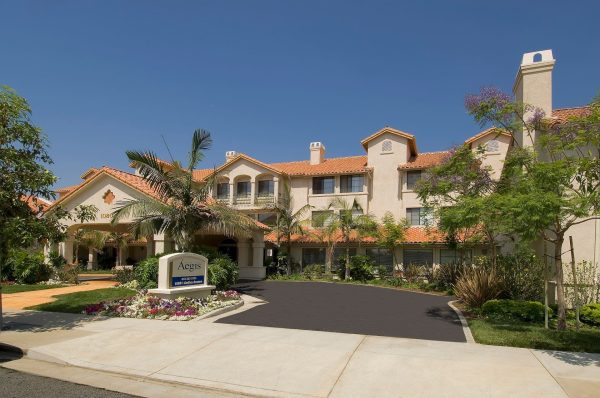
Granada Hills
10801 Lindley Ave
Granada Hills,
CA 91344
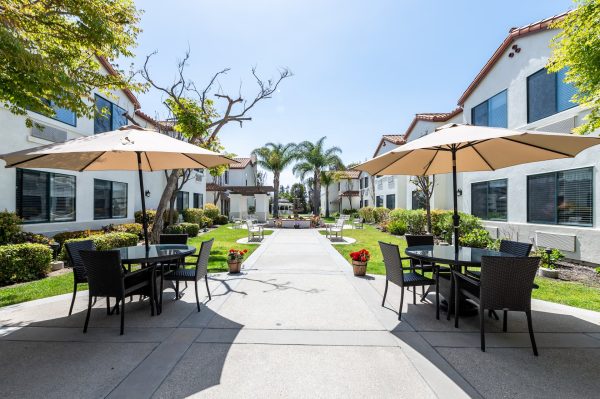
Ventura
4964 Telegraph Road
Ventura,
CA 93003
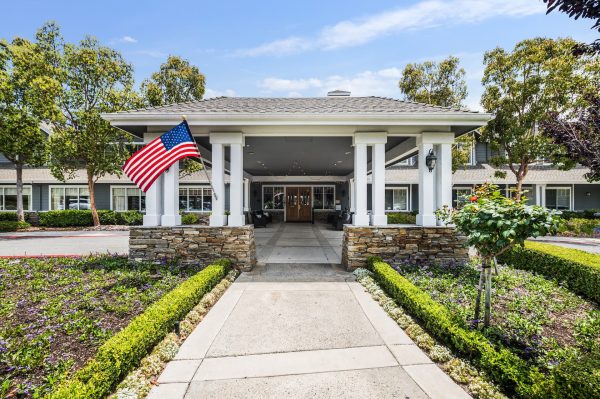
Laguna Niguel
32170 Niguel Rd
Laguna Niguel,
CA 92677